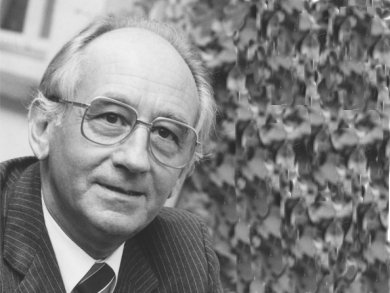Heinz A. Staab, former President of the Max Planck Society and Director at the Max Planck Institute for Medical Research, Heidelberg, Germany, died on July 29 after a long illness.
Heinz Staab was born in Darmstadt, Germany. He studied chemistry and medicine at the universities of Marburg, Tübingen, and Heidelberg, all Germany. He gained his Ph.D. in 1953 and his Doctor of Medicine in 1960. In 1959 he joined the faculty at Heidelberg University, initially as Assistant Professor and later as Associate Professor. He was promoted to full professor in the Department of Chemistry there in 1963 and to Director of the Institute of Organic Chemistry a year later.
In 1974 Staab became director of the Organic Chemistry Department at the Max Planck Institute for Medical Research in Heidelberg. From 1984–1985, he served as President of the Gesellschaft Deutscher Chemiker (GDCh, German Chemical Society) and from 1984–1990, as the President of the Max Planck Society (MPS). During his time as MPS President, Staab was successful in securing funding and saw the addition of 54 new appointments. He also set in motion plans for new institutes within the Max Planck organization.
Staab’s research focused on the field of heterocyclic compounds and biological chemistry. He will be remembered for the synthesis and study of the electronic structure of poly- and heteroaromatic compounds, conjugation effects in macrocyclic systems like benzoannulenes and cycloarenes such as kekulene, and electronic donor-acceptor interactions in the series of meta- and paracyclophanes. He also produced important reagents for chemical synthesis, which remain current to this day and are used worldwide in preparative chemistry. In later years Staab devoted himself to the mechanism of photosynthesis and compounds for biological energy storage.
In recognition of his many services, Staab was awarded the German Federal Grand Cross of Merit with Star, and in 1996 he was presented with the Harnack Medal, the highest award for particular service to the Max Planck Society.
- Investigations on Aromatic Systems,
H. A. Staab,
Angew. Chem. Int. Ed. Eng. 1964, 3(4), 319.
DOI: 10.1002/anie.196403191 - Proton-Resonance Investigations of “4 (or 5)-Substituted Imidazoles”,
H. A. Staab, A. Mannschreck,
Angew. Chem. Int. Ed. Eng. 1963, 2(4), 216–217.
DOI: 10.1002/anie.196302163 - C-Acylation of Alkylenephosphines,
H. J. Bestmann, N. Sommer, H. A. Staab,
Angew. Chem. Int. Ed. Eng. 1962, 1(5), 270.
DOI: 10.1002/anie.196202701 - Azolides in Organic Synthesis and Biochemistry,
H. A. Staab, H. Bauer, K. M. Schneider,
Wiley-VCH, Weinheim, Germany, 2003.
Print ISBN: 9783527293148
Online ISBN: 9783527600830
DOI: 10.1002/3527600833
Enantiomers of Staab’s tolanophane were finally resolved by chiral HPLC




